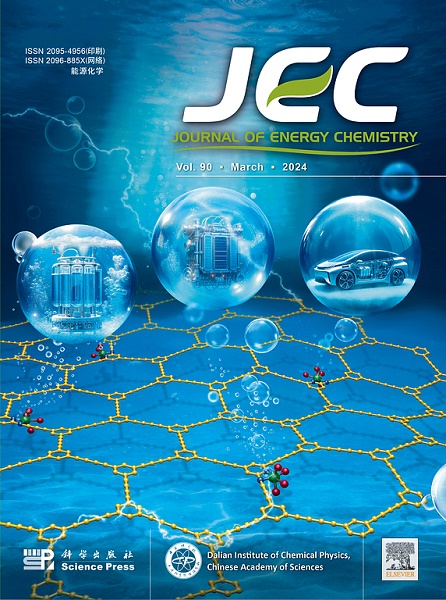A deep learning approach for enhanced degradation diagnostics of NMC lithium-ion batteries via impedance spectra
IF 13.1
1区 化学
Q1 Energy
引用次数: 0
Abstract
Electrochemical impedance spectroscopy (EIS) offers valuable insights into the dynamic behaviors of lithium-ion batteries, making it a powerful and non-invasive tool for evaluating battery health. However, EIS falls short in quantitatively determining the degree of specific degradation modes, which are essential for improving battery lifespan. This study introduces a novel approach employing deep neural networks enhanced by an attention mechanism to identify the degree of degradation modes. The proposed method can automatically determine the most relevant frequency ranges for each degradation mode, which can link impedance characteristics to battery degradation. To overcome the limitation of scarce labeled experimental data, simulation results derived from mechanistic models are incorporated into the model. Validation results demonstrate that the proposed method could achieve root mean square errors below 3% for estimating loss of lithium inventory and loss of active material of the positive electrode, and below 4% for estimating loss of active material of the negative electrode while requiring only 25% of early-stage experimental degradation data. By integrating simulation results, the proposed method achieves a reduction in maximum estimation error ranging from 42.92% to 66.30% across different temperatures and operating conditions compared to the baseline model trained solely on experimental data.

基于阻抗谱的NMC锂离子电池增强退化诊断的深度学习方法
电化学阻抗谱(EIS)为了解锂离子电池的动态行为提供了有价值的见解,使其成为评估电池健康状况的强大且非侵入性工具。然而,EIS在定量确定特定退化模式的程度方面存在不足,而这对于提高电池寿命至关重要。本研究引入了一种新的方法,利用增强了注意力机制的深度神经网络来识别退化模式的程度。该方法可以自动确定每种退化模式最相关的频率范围,从而将阻抗特性与电池退化联系起来。为了克服标记实验数据稀缺的限制,模型中加入了机械模型的仿真结果。验证结果表明,该方法估计锂库存损失和正极活性物质损失的均方根误差低于3%,估计负极活性物质损失的均方根误差低于4%,而只需要25%的早期实验降解数据。通过综合仿真结果,与单纯基于实验数据训练的基线模型相比,该方法在不同温度和工况下的最大估计误差降低了42.92% ~ 66.30%。
本文章由计算机程序翻译,如有差异,请以英文原文为准。
求助全文
约1分钟内获得全文
求助全文
来源期刊

Journal of Energy Chemistry
CHEMISTRY, APPLIED-CHEMISTRY, PHYSICAL
CiteScore
19.10
自引率
8.40%
发文量
3631
审稿时长
15 days
期刊介绍:
The Journal of Energy Chemistry, the official publication of Science Press and the Dalian Institute of Chemical Physics, Chinese Academy of Sciences, serves as a platform for reporting creative research and innovative applications in energy chemistry. It mainly reports on creative researches and innovative applications of chemical conversions of fossil energy, carbon dioxide, electrochemical energy and hydrogen energy, as well as the conversions of biomass and solar energy related with chemical issues to promote academic exchanges in the field of energy chemistry and to accelerate the exploration, research and development of energy science and technologies.
This journal focuses on original research papers covering various topics within energy chemistry worldwide, including:
Optimized utilization of fossil energy
Hydrogen energy
Conversion and storage of electrochemical energy
Capture, storage, and chemical conversion of carbon dioxide
Materials and nanotechnologies for energy conversion and storage
Chemistry in biomass conversion
Chemistry in the utilization of solar energy
 求助内容:
求助内容: 应助结果提醒方式:
应助结果提醒方式:


